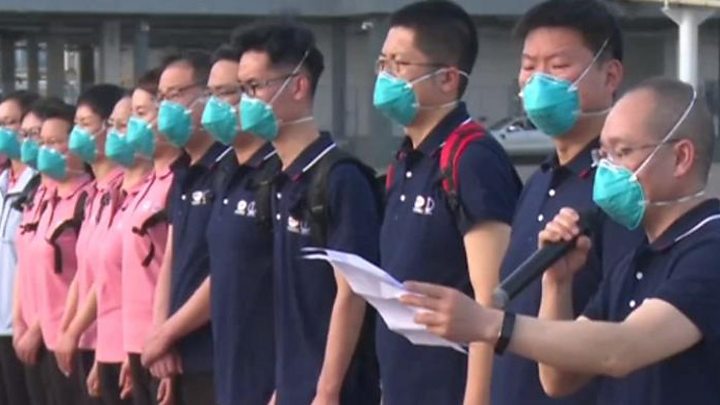China says Beijing coronavirus outbreak is under control
Posted 3h
Authorities say new confirmed cases of the virus have remained stable in China's capital.(AP: Mark Schiefelbein)
Share
China has declared a coronavirus outbreak in Beijing under control after confirming 25 new cases among tests of about 360,000 people.
Key points:
- Authorities say new confirmed cases of the virus in Beijing remain stable
- Beijing confirmed 183 new cases over the past week, including 25 on Friday
- Bus services between Beijing and other provinces are being suspended to prevent spread of the virus
Authorities said the number of new confirmed cases of the virus had remained stable in China's capital.
A Chinese Centre for Disease Control and Prevention (CDCP) official said the number of cases was expected to fall soon in an outbreak centred on Beijing's main wholesale market.
So far, Beijing has confirmed 183 new cases over the past week, including 25 new cases on Friday, up by four from Thursday (local time).
The 25 new cases reported on Friday were among 32 nationwide in China, four of them were returned residents from overseas.
Wu Zunyou, from the CDCP, said such outbreaks were inevitable but daily numbers should soon begin to decline.
He stressed that prevention measures should not be slacked.
A city transport spokesman said bus services between Beijing and other provinces would be suspended from Friday to try to prevent the outbreak's spread.
Checkpoints have been set up at the Xinfadi wholesale food market.(AP: Mark Schiefelbein)
School classes in the city have also been suspended and plans to restart sports and other events are on hold.
More than 360,000 tests for the virus have been carried out in recent days, according to city health authorities.
A health official said the outbreak spread from Beijing's main wholesale Xinfadi market, which has raised worries infections might have come from imported fish or sea products.
But a customs administration notice said nationwide testing for coronavirus in food imports were all negative.
Beijing genome data
In the latest Beijing outbreak, the World Health Organization (WHO) said on Sunday it had been informed by China of ongoing investigations into the source of the cluster and the extent of the infections. It requested the genetic sequences of the virus be released as soon as possible.
The genome sequencing was published late on Thursday and was also shared with the WHO and the Global Influenza Data Initiative (GISAID).
Virus genome sequencing is a vital and rapidly developing tool in the diagnosis of COVID-19 and in understanding the spread and control of the coronavirus.
Details published on China's National Microbiology Data Centre website revealed the Beijing genome data was based on three samples — two human and one environmental — collected on June 11.
That was the same day the Chinese capital reported its first new local COVID-19 infection in months.



